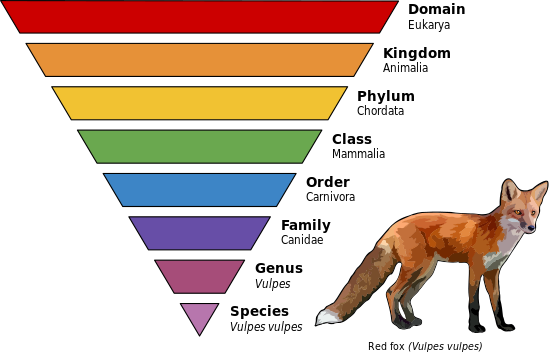The 5 kingdoms within eukarya are: monera (prokaryotes), protista, plantae, fungi, and animalia. After the discovery of archae, which were found to be very genetically different from bacteria, the 3 Domain System was developed. The 3 Domains are Eukarya, Archaea, and Bacteria. Archaea challenge what we think of as required to live, and they live near hydrothermal vents, digestive tracts of animals, marshes, etc. In the bacteria kingdom, actinomycetes produce antibiotics, symbiotic bacteria live in guts to help with digestion (fix nitrogen), and cyanobacteria are photosynthetic.
We classify bacteria by their shape, cell wall composition, and the way that they obtain energy. Bacteria can be cocci, bacilli, and spirals. The gram stain has a crystal violet dye which will either bond with the peptidoglycan (gram-positive), or not (gram-negative). Bacteria can be chemoheterotrophs (bacteria which take in organic molecules), photoautotrophs (use light to convert H20 and CO2 into glucose), or chemoautotrophs (use energy from chemical reactions). They are very important in decomposition, and as nitrogen fixers. Viruses are not cells, but instead cores of DNA or RNA surrounded by a protein coat, or capsid. There are two types of viruses: lytic viruses and lysogenic viruses.
Fungi is a unique kingdom, with different characteristics from plants. Their cell walls are made of chitin, and they absorb their food through hyphae. Some types of fungi include sac fungi, club fungi (mushrooms), bread molds. Some of plants' major phyla are bryophyta (mosses), pterophyta (ferns), gymnosperms, angiosperms (flowering plants). Angiosperms can be monocots (have a single seed leaf), and dicots (have two seed leaves).
In animals, there are two types of symmetry: bilateral and radial. Some phylums of invertebrates are cnidaria, porifera (sponges), molluska. Arthropods, crustaceans, and insects are also invertebrates.
.jpg/220px-Aplysina_archeri_(Stove-pipe_Sponge-pink_variation).jpg) |
| A sponge, part of the phylum Porifera |
In the phylum chordata, which is mostly vertebrates, there are 7 classes of vertebrates: agnatha, condricthyes, osteicthyes, amphibia, and the amniotes reptilia, aves, and mammalia. Reptiles and amphibians have 3 chambers in their hearts, while birds and mammals have 4. They can be either ectothermic (cold-blooded) or endothermic (warm-blooded).
Here is my "What on Earth Evolved Presentation"
In this unit, we each chose an organism to present about and research in depth, and we had to give a 4-8 minute presentation to the class. I had researched the topic and practiced the presentation, so I felt as if I knew the subject well. Since I practiced before presenting, my nerves went away as soon as I started presenting, and I learned that this is a way to be more confident that works for me. In the future, I would include additional interesting facts and pictures as well.

No comments:
Post a Comment